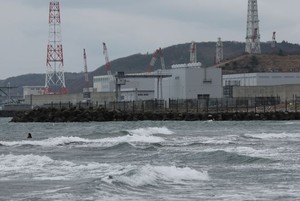REUTERS
April 5, 2024 at 12:30 JST
 U.S. Treasury Secretary Janet Yellen attends a press conference in San Francisco, California, U.S., November 10, 2023. (REUTERS)
U.S. Treasury Secretary Janet Yellen attends a press conference in San Francisco, California, U.S., November 10, 2023. (REUTERS)
GUANGZHOU, China--U.S. Treasury Secretary Janet Yellen arrived in China’s southern factory hub of Guangzhou on Thursday with a tough message to Chinese officials: you’re producing too much of everything, especially clean energy goods, and the world can’t absorb it.
China is unleashing a flood of electric vehicles (EVs), batteries, solar panels, semiconductors and other manufactured goods into global markets, the result of years of massive government subsidies and weak demand at home. Global prices for many goods are tanking, pressuring producers in other countries.
“We see a growing threat of money-losing firms that are going to have to sell off their production somewhere,” a senior U.S. Treasury official said of overproduction in key Chinese sectors.
In a series of meetings with top Chinese economic officials from Friday through Monday, Yellen will seek to convey her view that the excess production is unhealthy for China and that there is a growing drumbeat of concern about it in the U.S., Europe, Japan, Mexico and other major economies.
The official, who spoke on condition of anonymity, also said Yellen would explain: “If there are trade actions around the world, it’s not an anti-China thing, it’s a response to their policies.”
But Beijing appears to be doubling down on investing in more manufacturing capacity in favored high-technology sectors, a stance that is also increasingly at odds with Europe.
“I do think the stage is set for renewed tensions with China,” said Brad Setser, a former U.S. trade and Treasury official.
Setser added that Yellen’s warnings about Chinese overproduction may be an initial step by the Biden administration towards new tariffs or other trade barriers on Chinese EVs, batteries and other goods.
En route to Guangzhou, Yellen declined to say whether she would raise the threat of new tariffs in her meetings in Guangzhou and Beijing with Chinese Vice Premier He Lifeng and Guangdong Province Governor Wang Weizhong, who has also presided over hundreds of billions of dollars’ worth of recent new projects.
But she said the Biden administration was determined to develop American supply chains in EVs, solar power and other clean energy goods with investment tax credits and would not “rule out other possible ways in which we would protect them”.
In March, China’s leadership pledged to follow through on President Xi Jinping’s new mantra of unleashing “new productive forces” in China by investing in developing technology industries including EVs, new materials, commercial spaceflight and life sciences - areas where many U.S. firms hold advantages.
Yellen will also argue that China would be better off focusing spending on supporting households and boosting chronically weak consumer spending.
FACTORY FIRST
The results of China’s prior investment binges are staggering.
Including EVs and combustion-engine cars, China by the end of 2022 had the capacity to produce 43 million vehicles annually, but its plant utilization rate - a measure closely linked to profitability - was just under 55%, according to data from the China Passenger Car Association.
Bill Russo, the Shanghai-based founder and CEO of advisory firm Automobility, estimated that this translates to excess auto production capacity of about 10 million vehicles a year, or roughly two-thirds of North American auto output in 2022.
And new entrants are still coming into an increasingly cut-throat Chinese EV market. Mobile phone maker Xiaomi on Tuesday launched sales of its sporty Speed Ultra 7 EV, drawing an estimate from Citi analysts that each unit sold would lose $10,000.
SOLAR DOMINANCE
The situation in China’s solar panel sector may be worse, where overproduction pushed prices down 42% last year to levels 60% below the cost of comparable U.S.-made products. Major Chinese producers are continuing to build factories, backed by provincial and local subsidies.
At the end of 2023, China had the capacity to build 861 gigawatts of solar modules per year, more than double the global total installed capacity of 390 million gigawatts. Another 500-600 gigawatts of annual capacity is forecast to come online this year -- enough to supply all global demand through 2032, according to energy research firm Wood Mackenzie.
Chinese officials are expected to push back and argue that the excess capacity results from an unexpected downturn in demand following a property crisis and a rocky exit from COVID-19, said Scott Kennedy, a China economics expert at the Center for Strategic and International Studies in Washington.
“I can foresee a conversation that goes around in circles,” he added.




















A peek through the music industry’s curtain at the producers who harnessed social media to help their idols go global.
A series based on diplomatic documents declassified by Japan’s Foreign Ministry
Here is a collection of first-hand accounts by “hibakusha” atomic bomb survivors.
Cooking experts, chefs and others involved in the field of food introduce their special recipes intertwined with their paths in life.
A series about Japanese-Americans and their memories of World War II